
One Week in Austria: Charming Cities & Scenic Beauty
 7 Day Tour of Vienna and Salzburg
7 Day Tour of Vienna and Salzburg
Overview
Trip Map
Itinerary
Inclusions
Reviews







7 Days 6 Nights
Best Time: Jan-Dec
Exploring Scenic Countryside
Nature Lovers
This one-week journey takes you to Austria’s two most beautiful cities, with excursions into its picturesque mountains. Start in Vienna, exploring Schönbrunn Palace and strolling the historic Ringstrasse. Enjoy a guided walk through Vienna’s Inner City and a scenic Danube cruise amidst the vineyards of the Wachau Valley. Travel to Salzburg for panoramic views from Mirabell Palace Gardens and soak in the delightful baroque atmosphere. Conclude in Hallstatt, a fairytale village nestled between a lake and majestic mountains. This trip offers the best of Austria's cities, nature, & charming villages, all with expert guidance from Go Real Travel.
- Explore the magnificent Schönbrunn Palace and its vast gardens in Vienna.
- Enjoy a private guided walking tour through the historic heart of Vienna's Inner City.
- Experience a breathtaking Danube cruise through the Wachau Valley, a UNESCO World Heritage site.
- Discover Salzburg's stunning Mirabell Palace Gardens, imposing fortress, and historic Altstadt.
- Visit the scenic village of Hallstatt, surrounded by a pristine alpine lake and dramatic mountains.
This one-week journey takes you to Austria’s two most beautiful cities, with excursions into its picturesque mountains. Start in Vienna, exploring Schönbrunn Palace and strolling the historic Ringstrasse. Enjoy a guided walk through Vienna’s Inner City and a scenic Danube cruise amidst the vineyards of the Wachau Valley. Travel to Salzburg for panoramic views from Mirabell Palace Gardens and soak in the delightful baroque atmosphere. Conclude in Hallstatt, a fairytale village nestled between a lake and majestic mountains. This trip offers the best of Austria's cities, nature, & charming villages, all with expert guidance from Go Real Travel.
- Explore the magnificent Schönbrunn Palace and its vast gardens in Vienna.
- Enjoy a private guided walking tour through the historic heart of Vienna's Inner City.
- Experience a breathtaking Danube cruise through the Wachau Valley, a UNESCO World Heritage site.
- Discover Salzburg's stunning Mirabell Palace Gardens, imposing fortress, and historic Altstadt.
- Visit the scenic village of Hallstatt, surrounded by a pristine alpine lake and dramatic mountains.

Hofburg Palace
Castles & Chateaux

St Stephen’s Cathedral
Churches & Monasteries

Museumsquartier
Museums & Galleries

Schönbrunn Palace & Zoo
Parks & Gardens

Spanish Riding School
Cultural

Hohensalzburg Fortress
Castles & Chateaux

Old Town
Architecture

Mirabell Palace & Gardens
Parks & Gardens

Hellbrunn Palace
Castles & Chateaux
Must see sights

Hofburg Palace
Castles & Chateaux

St Stephen’s Cathedral
Churches & Monasteries

Museumsquartier
Museums & Galleries

Schönbrunn Palace & Zoo
Parks & Gardens

Spanish Riding School
Cultural

Hohensalzburg Fortress
Castles & Chateaux

Old Town
Architecture

Mirabell Palace & Gardens
Parks & Gardens

Hellbrunn Palace
Castles & Chateaux
Starting from
$1240
per person
 Not included
Not included Secure Your Customizable Trip
Enter your details to embark on a journey that can be tailored just for you.
Start
Travelers
Add Room
Remove Room
Preferred Hotel Stars
Craft Your Own Itinerary
Select your interests and destinations for a trip plan inspired by you.
Trip Map & Itinerary
Enable/Disable Map Scrolling
Click To Make Map Interactive

Trip Timeline
 Edit Details
Edit DetailsArrival
3 nights
Vienna
Austria
Train: 2.5h
3 nights
Salzburg
Austria
Departure
Day-By-Day Itinerary
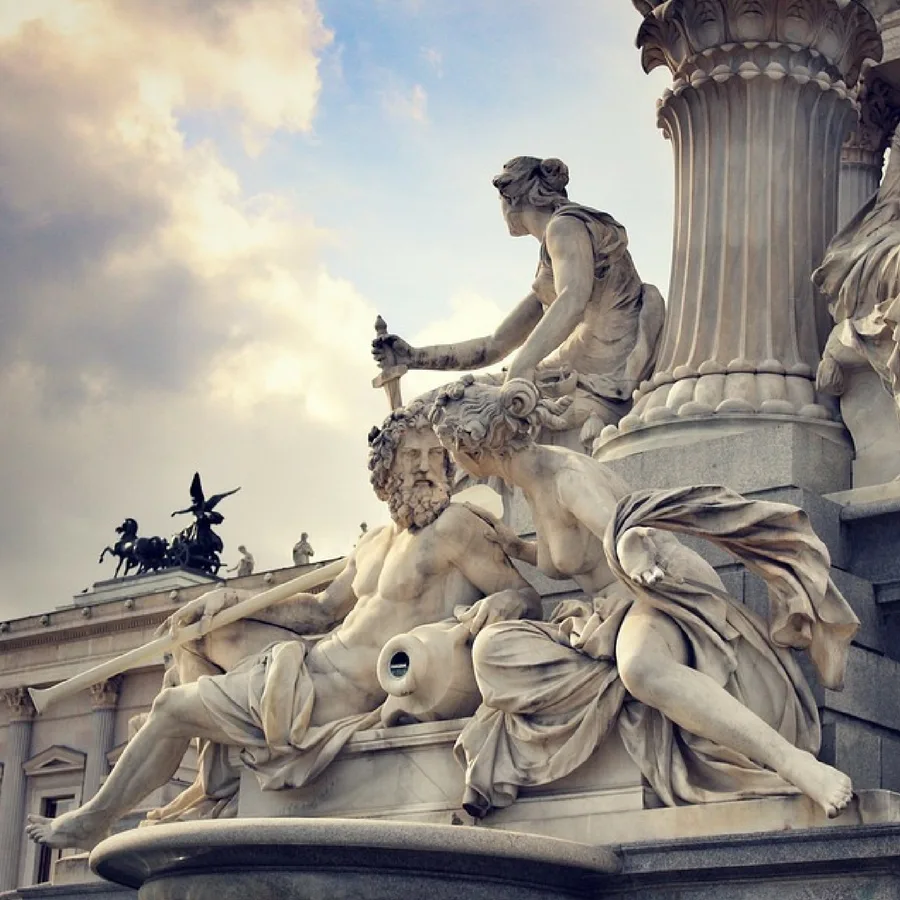
Day 1
Arrive Vienna
View More
Day 1
Arrive Vienna



To Be Determined
Arrival in Vienna Airport and Transfer to Hotel by Public Taxi
Vienna has one main airport, Vienna International Airport, where almost all visitors arrive. Taxis are available directly at the terminal exit, or you can arrange a private transfer for added convenience. Uber is also available to those who have the app.

Day 1
Arrive Vienna
View More


Day 1
Arrive Vienna




To Be Determined:
Taxi Transfer to Hotel
Mid-Day/Afternoon:
Schönbrunn Palace
Late Afternoon/Early Evening:
Ring Street


Day 2
Vienna
View More
Day 2
Vienna



9:00 AM - 11:30 AM
Guided Walk through Vienna's Inner City
This tour takes you back in history to explore the Vienna that stood within the old city walls. You will learn about the humble beginnings of Vienna before it became the capital of a great empire and one of the most important cities in Europe. You will discover how Vienna's early inhabitants lived and how they left their mark on the city and its beautiful Medieval, Renaissance, and Baroque architecture.

Day 2
Vienna
View More


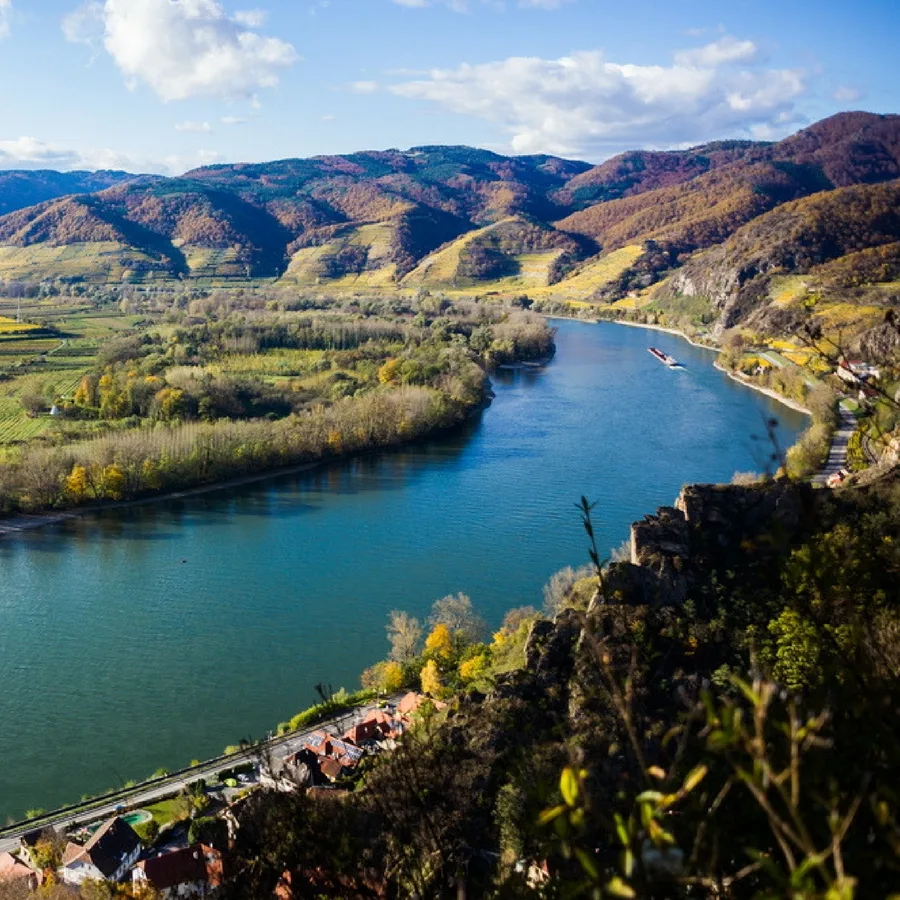
Day 3
Vienna
View More
Day 3
Vienna

Early Morning to Early Evening
Danube Cruise in the Scenic Wachau Valley
A one-and-a-half-hour train ride from Vienna brings you to the town of Melk, where you can tour the vast Melk Abbey. From there you can begin a 22-mile cruise through the Wachau Valley, considered the most beautiful stretch of the entire Danube River. You'll pass medieval castle ruins, hills covered in vineyards, and several charming villages, where you can debark to try some wine or take a hike up to a castle. The valley is also a perfect destination for cyclers and winery tours.

Dürnstein
Explore the twisting narrow lanes of this delightful monastery town.
Show More

Dürnstein Castle Ruins
Hike to the dramatic ruins of a medieval castle built in 1100's.
Show More

Melk Abbey
Tour a huge and splendid Baroque monastery.
Show More

Spitz
Stop to taste the wine in a postcard-pretty town surrounded by vineyards.
Show More

Dürnstein
Explore the twisting narrow lanes of this delightful monastery town.
Show More

Dürnstein Castle Ruins
Hike to the dramatic ruins of a medieval castle built in 1100's.
Show More

Melk Abbey
Tour a huge and splendid Baroque monastery.
Show More

Spitz
Stop to taste the wine in a postcard-pretty town surrounded by vineyards.
Show More
prev
next

Day 3
Vienna
View More

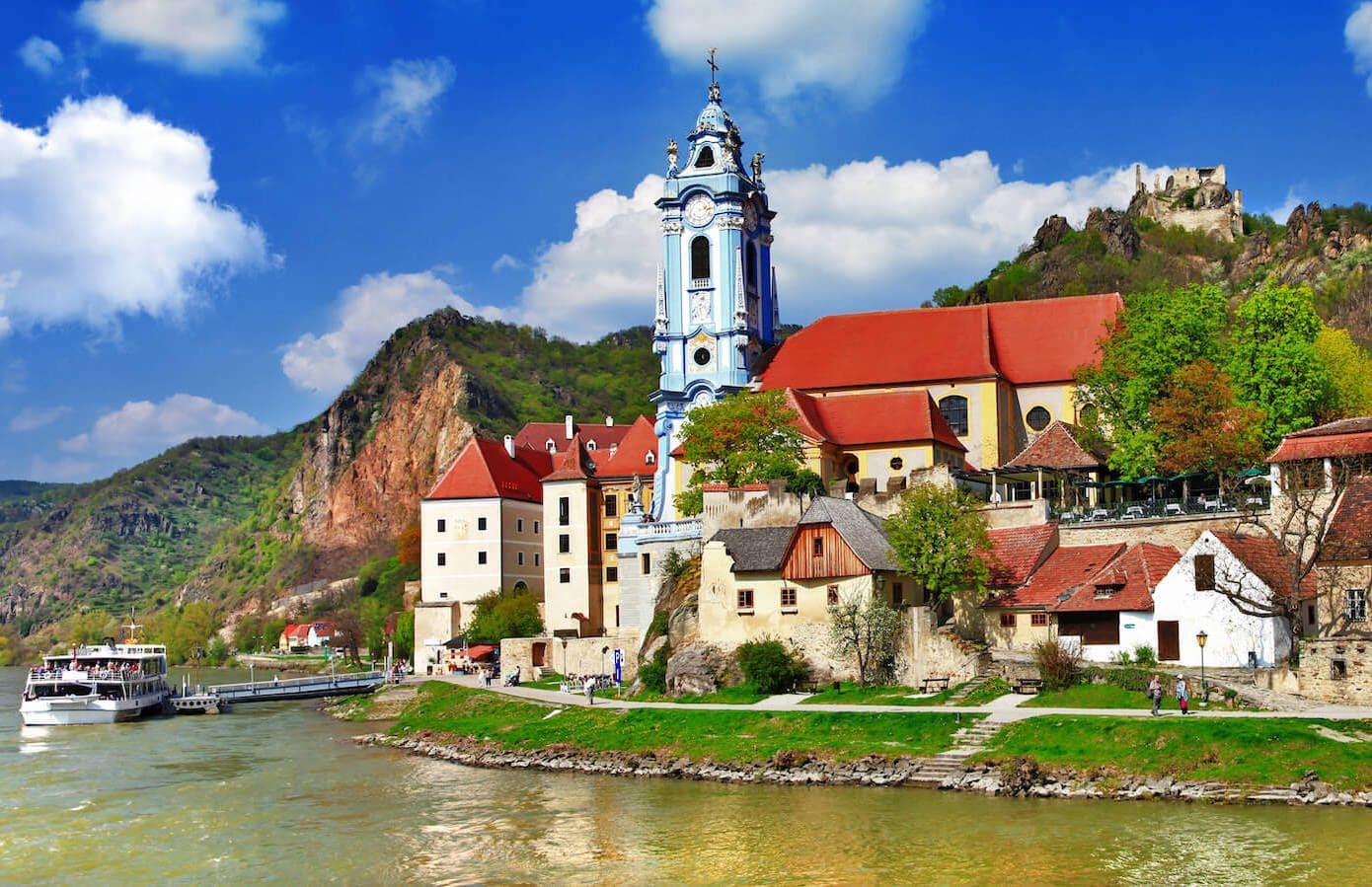
Dürnstein
 Highlight of Wachau Valley
Highlight of Wachau ValleyExplore the twisting narrow lanes of this delightful monastery town.
Named for the castle that overlooks it, Dürnstein is probably the most-visited stop in the Wachau valley. Reached by an ancient tunnel leading from the boat docks, it is well-known for its wine as well as the beautiful blue church tower of its Augustinian monastery.
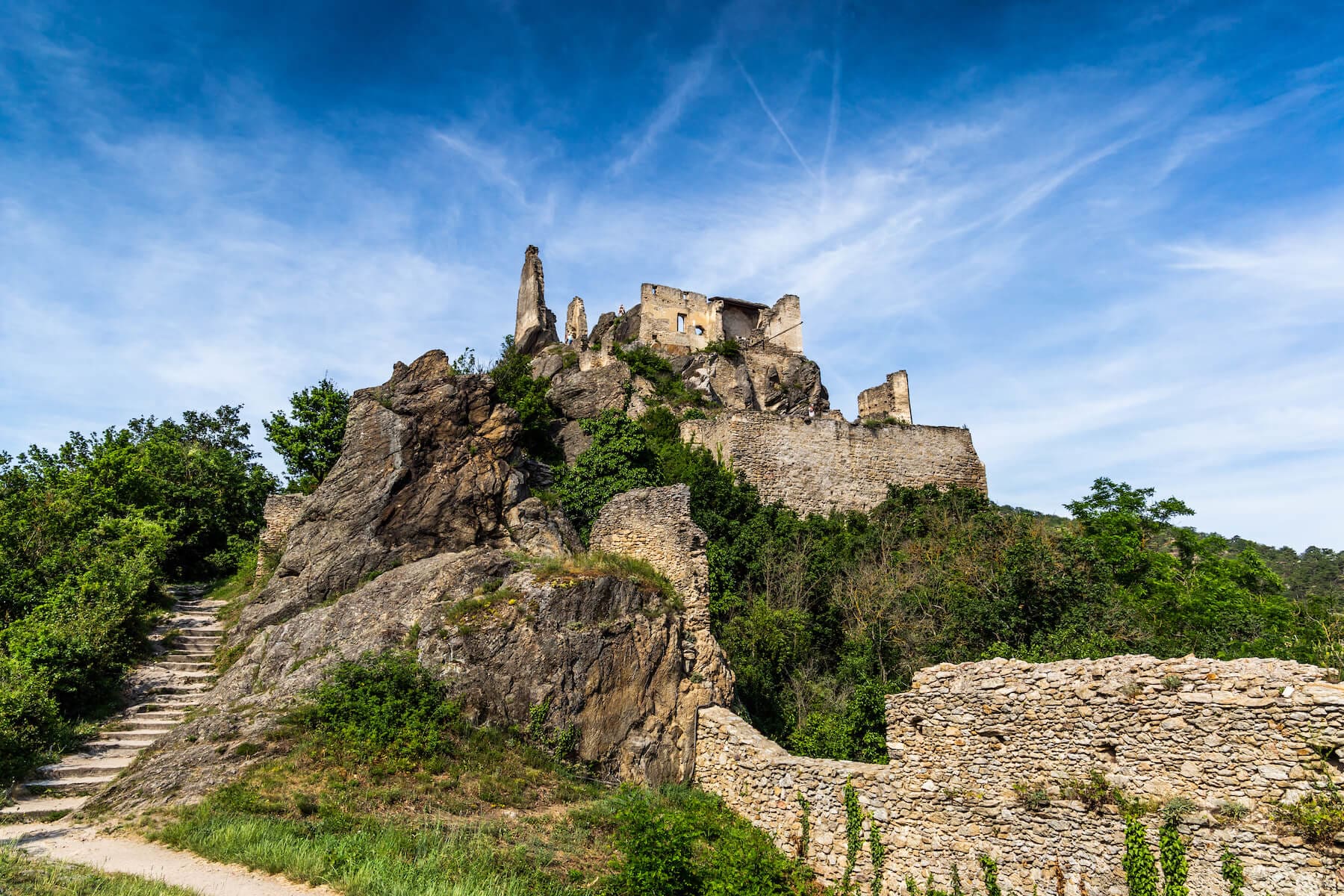
Dürnstein Castle Ruins
 Highlight of Wachau Valley
Highlight of Wachau ValleyHike to the dramatic ruins of a medieval castle built in 1100's.
The hike leading to the castle is steep, but the amazing view you are rewarded with makes it all worth while. The fascinating ruins are extensive and can be freely explored. The castle was made famous by its most illustrious prisoner, King Richard the Lionhearted of England, who was held there for ransom.
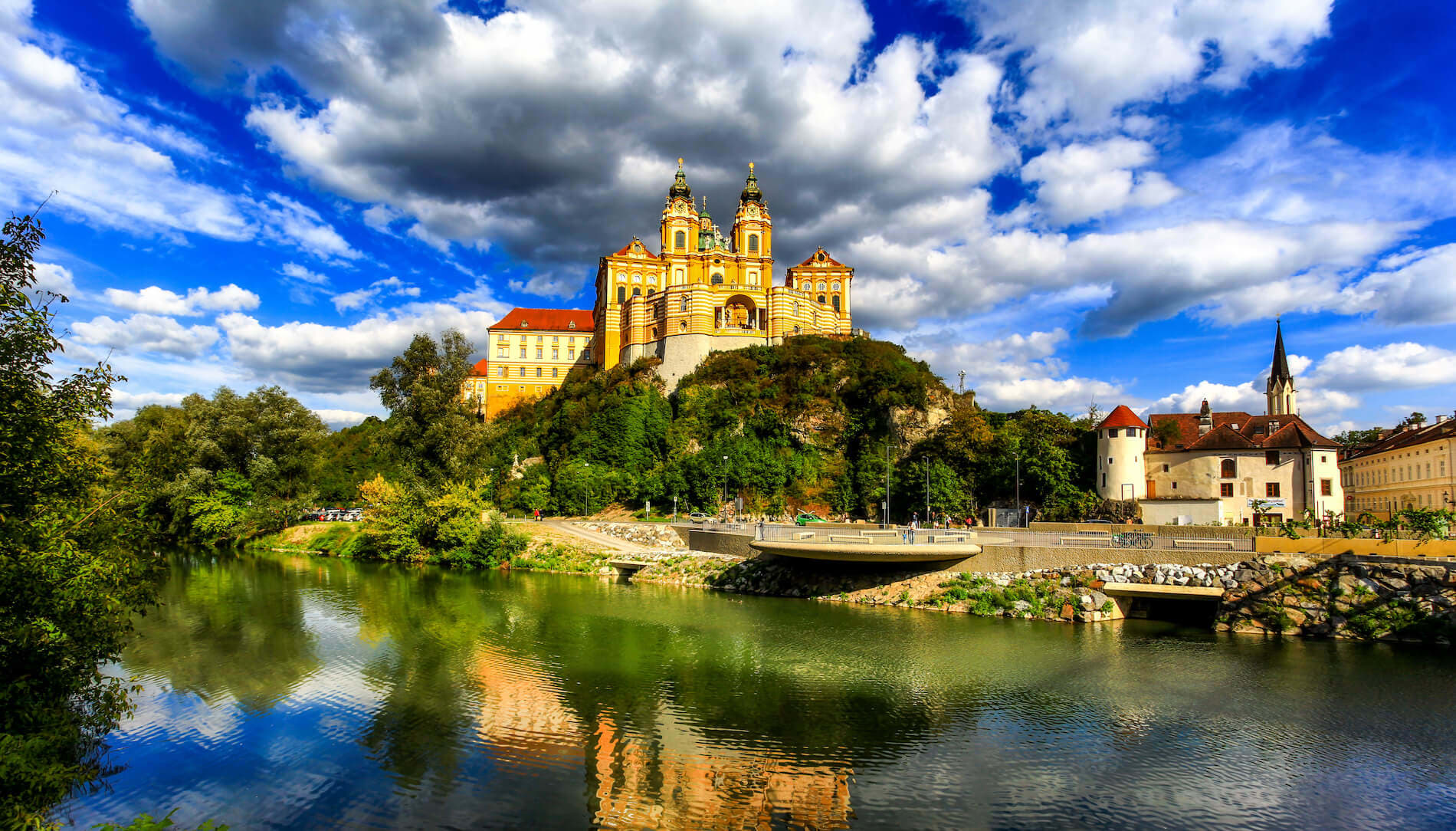
Melk Abbey
 Highlight of Wachau Valley
Highlight of Wachau ValleyTour a huge and splendid Baroque monastery.
Founded in 1089 when the Austrian duke gave one of his castles to Benedictine monks, Melk Abbey is now both a place of pilgrimage and a major tourist attraction. Visitors come for the museum of religious artifacts, the jaw-dropping library, and the sublime church. The town square below the abbey is also a great place for a meal or wine.
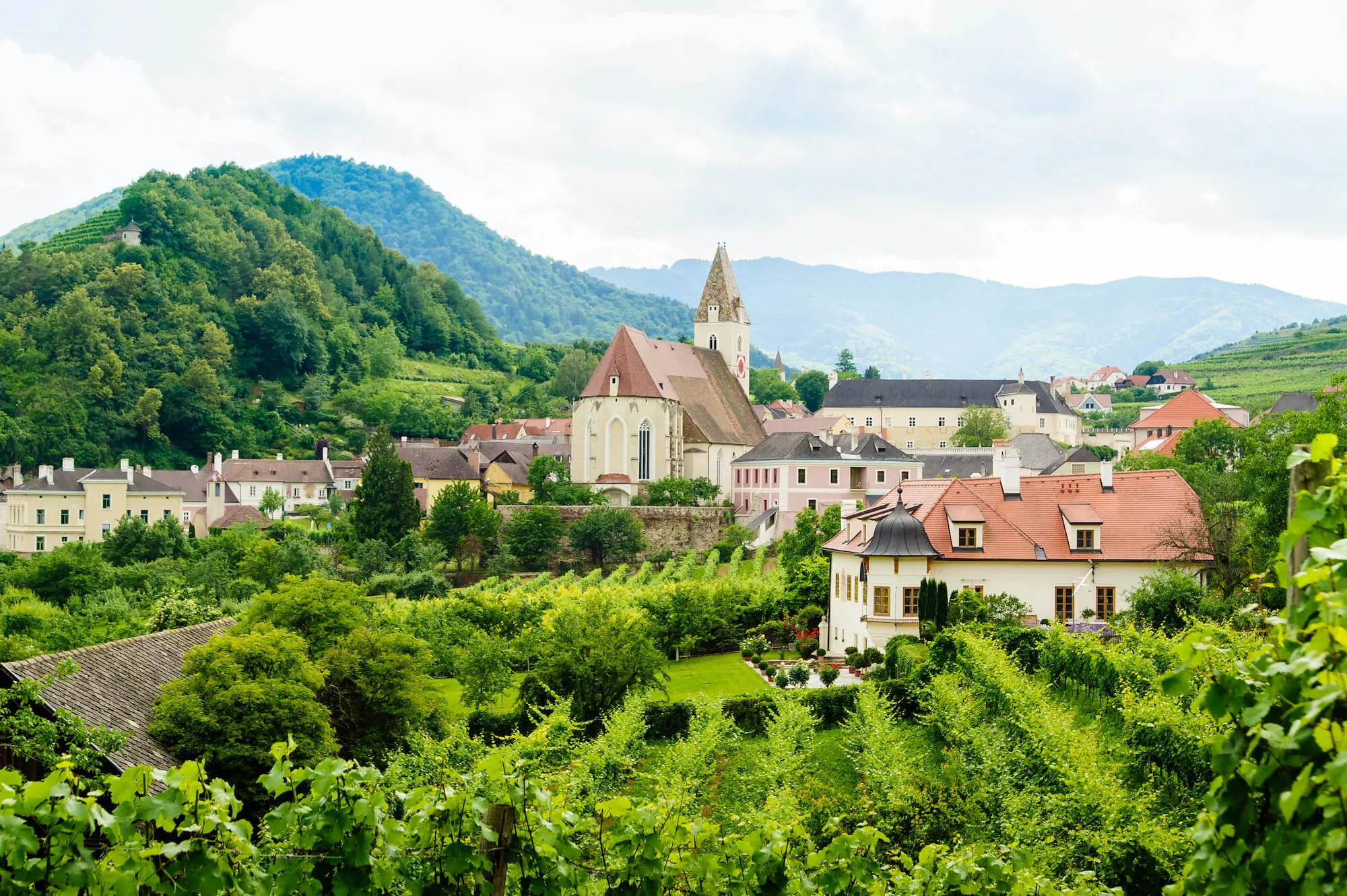
Spitz
 Highlight of Wachau Valley
Highlight of Wachau ValleyStop to taste the wine in a postcard-pretty town surrounded by vineyards.
Spitz is a favorite stop due to its bucolic atmosphere and abundance of wine taverns and restaurants. It is also home to the Tausendeimerberg or "House of a Thousand Buckets" (so named for the abundance of wine fields) and the castle ruins of Hinterhaus, which make for a nice (if steep) hike from the village.

Dürnstein
 Highlight of Wachau Valley
Highlight of Wachau ValleyExplore the twisting narrow lanes of this delightful monastery town.
Named for the castle that overlooks it, Dürnstein is probably the most-visited stop in the Wachau valley. Reached by an ancient tunnel leading from the boat docks, it is well-known for its wine as well as the beautiful blue church tower of its Augustinian monastery.

Dürnstein Castle Ruins
 Highlight of Wachau Valley
Highlight of Wachau ValleyHike to the dramatic ruins of a medieval castle built in 1100's.
The hike leading to the castle is steep, but the amazing view you are rewarded with makes it all worth while. The fascinating ruins are extensive and can be freely explored. The castle was made famous by its most illustrious prisoner, King Richard the Lionhearted of England, who was held there for ransom.

Melk Abbey
 Highlight of Wachau Valley
Highlight of Wachau ValleyTour a huge and splendid Baroque monastery.
Founded in 1089 when the Austrian duke gave one of his castles to Benedictine monks, Melk Abbey is now both a place of pilgrimage and a major tourist attraction. Visitors come for the museum of religious artifacts, the jaw-dropping library, and the sublime church. The town square below the abbey is also a great place for a meal or wine.

Spitz
 Highlight of Wachau Valley
Highlight of Wachau ValleyStop to taste the wine in a postcard-pretty town surrounded by vineyards.
Spitz is a favorite stop due to its bucolic atmosphere and abundance of wine taverns and restaurants. It is also home to the Tausendeimerberg or "House of a Thousand Buckets" (so named for the abundance of wine fields) and the castle ruins of Hinterhaus, which make for a nice (if steep) hike from the village.
prev
next

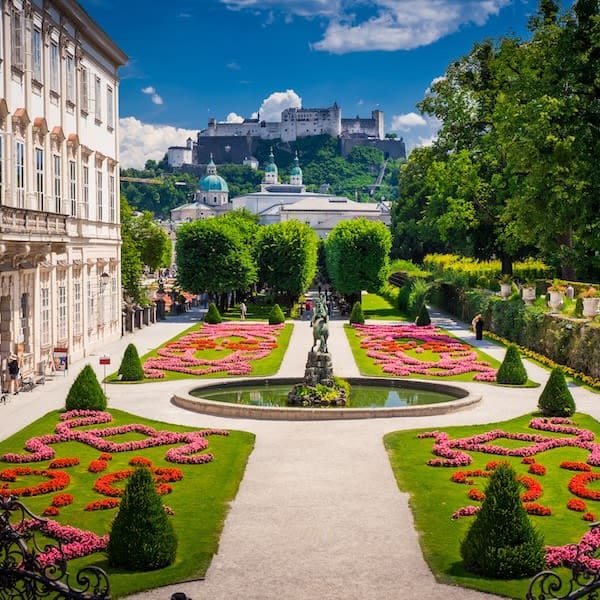
Day 4
Vienna to Salzburg
View More
Day 4
Vienna to Salzburg





9:40 AM
Transfer to Station by Taxi or Public Transport
Your hotel front desk will also be happy to arrange a taxi pick up for you. Vienna taxis are generally reliable and honest, so this is cheaper than a pre-arranged transfer. Your itinerary will provide more information on ordering a taxi, as well as detailed information on navigating the train station and finding your train, making the whole process simple and stress-free.

Day 4
Vienna to Salzburg
View More


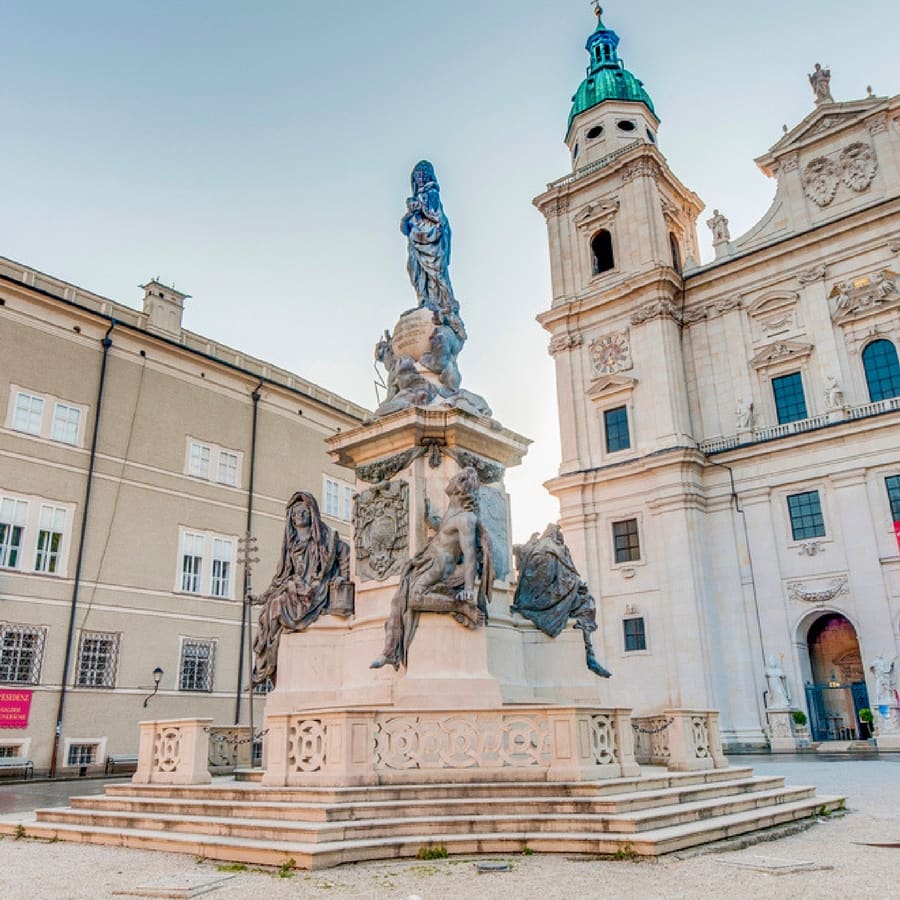
Day 5
Salzburg
View More
Day 5
Salzburg



9:30 AM - 12:00 PM
Guided Walking Tour of Salzburg
Salzburg is simply overwhelming in all the best ways. It is alive with fascinating history, grandiose and sublime architecture fills every street and square, culture and music permeate the atmosphere, and it is surrounded by breath-taking natural scenery. This guided tour with a local will provide the context needed to bring all of this beauty into perspective, and to connect the physical city to its history, culture, and environment.

Mozartplatz
One of several grand squares in the center of Altstadt in Salzburg.
Show More

Salzburg Cathedral
Visit Salzburg's largest and most impressive church.
Show More

Mozartplatz
One of several grand squares in the center of Altstadt in Salzburg.
Show More

Salzburg Cathedral
Visit Salzburg's largest and most impressive church.
Show More

Mozartplatz
One of several grand squares in the center of Altstadt in Salzburg.
Show More

Salzburg Cathedral
Visit Salzburg's largest and most impressive church.
Show More
prev
next

Day 5
Salzburg
View More


Mozartplatz
 Highlight of Guided Walking Tour of Salzburg
Highlight of Guided Walking Tour of SalzburgOne of several grand squares in the center of Altstadt in Salzburg.
One of several grand squares in the center of Altstadt in Salzburg. In the Mozartplatz you can find a statue of the famous composer.

Salzburg Cathedral
 Highlight of Guided Walking Tour of Salzburg
Highlight of Guided Walking Tour of SalzburgVisit Salzburg's largest and most impressive church.
The current cathedral was built between 1614-1628 and is a masterpiece of baroque architecture. The cathedral was largely destroyed by an Allied bomb in WWII but was restored by 1959. One of the most significant treasures in the cathedral is the Baptismal Font, which was cast in 1321 and rests on copper lions dating back to the 1100s.

Mozartplatz
 Highlight of Guided Walking Tour of Salzburg
Highlight of Guided Walking Tour of SalzburgOne of several grand squares in the center of Altstadt in Salzburg.
One of several grand squares in the center of Altstadt in Salzburg. In the Mozartplatz you can find a statue of the famous composer.

Salzburg Cathedral
 Highlight of Guided Walking Tour of Salzburg
Highlight of Guided Walking Tour of SalzburgVisit Salzburg's largest and most impressive church.
The current cathedral was built between 1614-1628 and is a masterpiece of baroque architecture. The cathedral was largely destroyed by an Allied bomb in WWII but was restored by 1959. One of the most significant treasures in the cathedral is the Baptismal Font, which was cast in 1321 and rests on copper lions dating back to the 1100s.

Mozartplatz
 Highlight of Guided Walking Tour of Salzburg
Highlight of Guided Walking Tour of SalzburgOne of several grand squares in the center of Altstadt in Salzburg.
One of several grand squares in the center of Altstadt in Salzburg. In the Mozartplatz you can find a statue of the famous composer.

Salzburg Cathedral
 Highlight of Guided Walking Tour of Salzburg
Highlight of Guided Walking Tour of SalzburgVisit Salzburg's largest and most impressive church.
The current cathedral was built between 1614-1628 and is a masterpiece of baroque architecture. The cathedral was largely destroyed by an Allied bomb in WWII but was restored by 1959. One of the most significant treasures in the cathedral is the Baptismal Font, which was cast in 1321 and rests on copper lions dating back to the 1100s.
prev
next


Day 6
Salzburg
View More
Day 6
Salzburg

Early Morning to Late Afternoon
Excursion to Hallstatt
Hallstatt is one of the most picturesque settings in Austria. The tiny town is wedged between the shores of a pristine alpine lake and dramatic mountains rising directly behind it. In addition to being blessed with an amazing setting, Hallstatt was made prosperous from nearby salt mines. The wealth from salt mining financed many impressive historic buildings as well, which now make the town even more picturesque.

Salt Mines of Hallstatt
Go to the top of the mountain in order to descend deep into its depths within ancient mines.
Show More

Hallstatt Skywalk
Experience an absolutely exhilarating view over Hallstatt.
Show More

Beinhaus
Enter the burial chamber of Hallstatt's ancestors.
Show More

Salt Mines of Hallstatt
Go to the top of the mountain in order to descend deep into its depths within ancient mines.
Show More

Hallstatt Skywalk
Experience an absolutely exhilarating view over Hallstatt.
Show More

Beinhaus
Enter the burial chamber of Hallstatt's ancestors.
Show More

Salt Mines of Hallstatt
Go to the top of the mountain in order to descend deep into its depths within ancient mines.
Show More
prev
next

Day 6
Salzburg
View More


Salt Mines of Hallstatt
 Highlight of Hallstatt
Highlight of HallstattGo to the top of the mountain in order to descend deep into its depths within ancient mines.
Hallstatt was made prosperous from nearby salt mines, but mining was important even in pre-historic times. A funicular railway is located near the town, which leads to a panoramic viewing platform and to the ancient salt mine, which is still in operation and can be toured today.
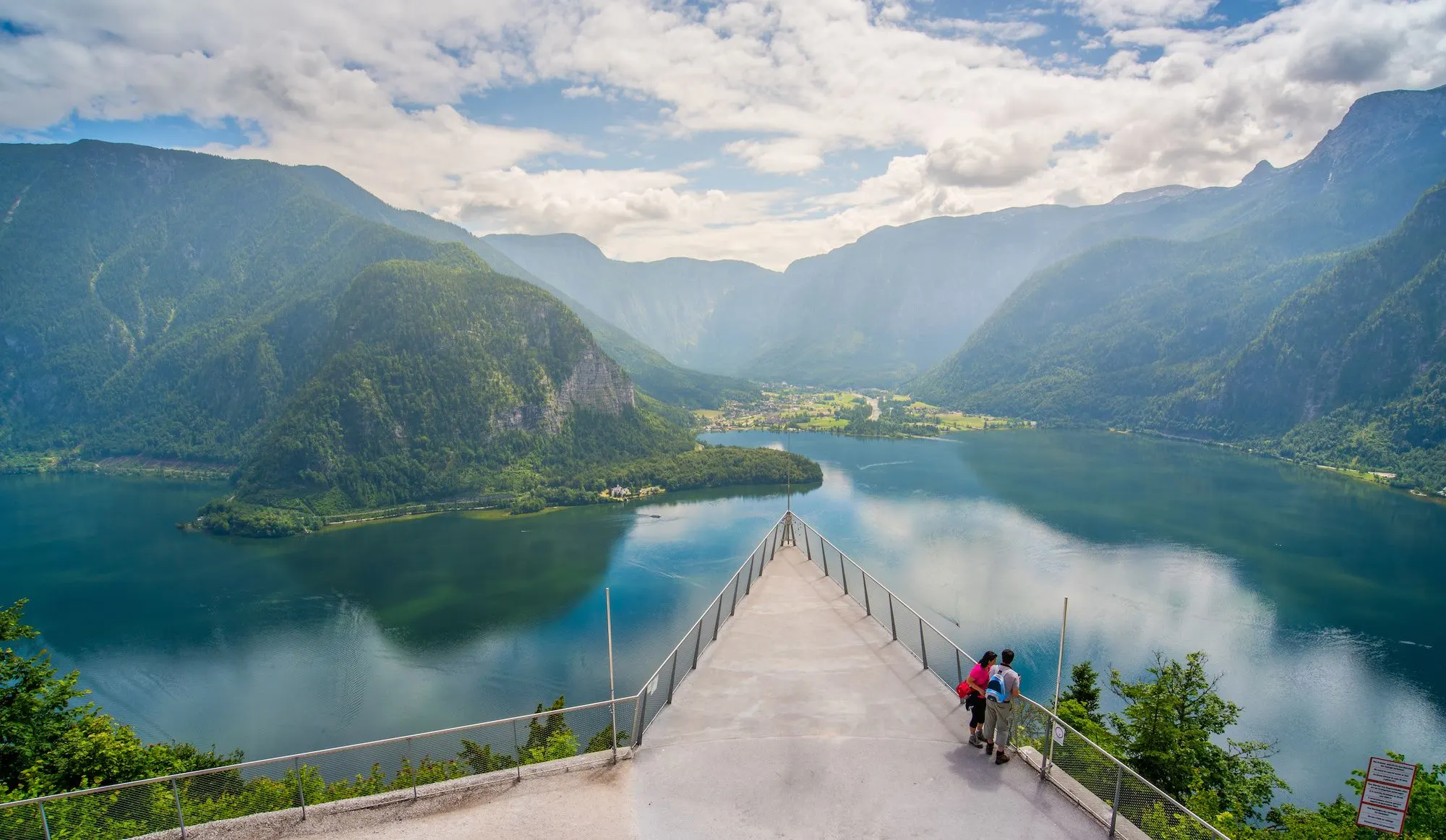
Hallstatt Skywalk
 Highlight of Hallstatt
Highlight of HallstattExperience an absolutely exhilarating view over Hallstatt.
The Hallstatt Skywalk is reached via the same funicular railway that leads to the Salt Mines. The viewing platform hangs over thin air, making the view absolutely unforgettable.
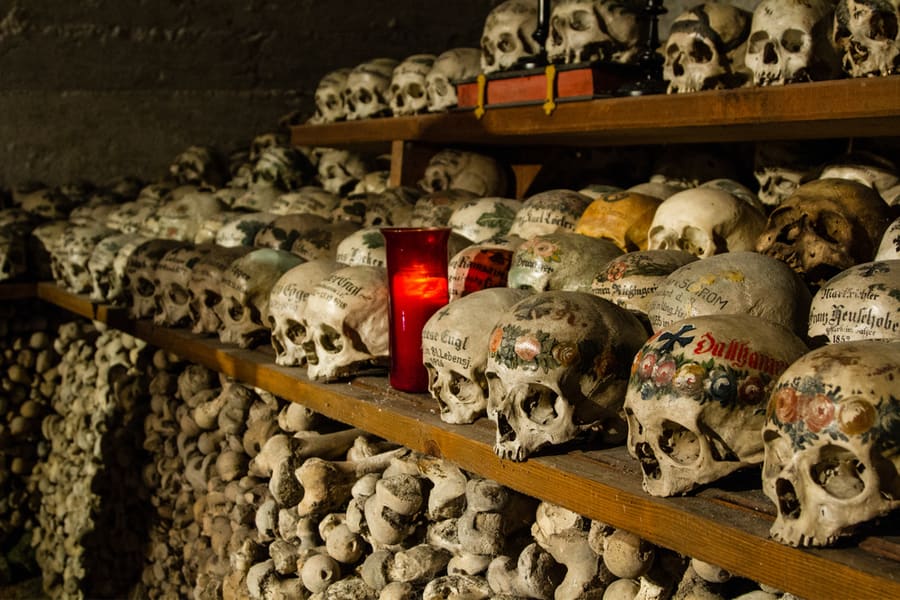
Beinhaus
 Highlight of Hallstatt
Highlight of HallstattEnter the burial chamber of Hallstatt's ancestors.
Hallstatt long ago ran out of room for burials, so in the Middle Ages they began exhuming bodies after approximately 15 years and then stacking the bones in the Beinhaus (i.e. bone house) in St. Michael's chapel, freeing up room for more burials. The bones are treated respectfully – it is not meant as a house of horrors but as a way of dealing with the land scarcity. Eventually, they even began to paint the skulls with flowers to symbolize the wreaths traditionally laid on graves.

Salt Mines of Hallstatt
 Highlight of Hallstatt
Highlight of HallstattGo to the top of the mountain in order to descend deep into its depths within ancient mines.
Hallstatt was made prosperous from nearby salt mines, but mining was important even in pre-historic times. A funicular railway is located near the town, which leads to a panoramic viewing platform and to the ancient salt mine, which is still in operation and can be toured today.

Hallstatt Skywalk
 Highlight of Hallstatt
Highlight of HallstattExperience an absolutely exhilarating view over Hallstatt.
The Hallstatt Skywalk is reached via the same funicular railway that leads to the Salt Mines. The viewing platform hangs over thin air, making the view absolutely unforgettable.

Beinhaus
 Highlight of Hallstatt
Highlight of HallstattEnter the burial chamber of Hallstatt's ancestors.
Hallstatt long ago ran out of room for burials, so in the Middle Ages they began exhuming bodies after approximately 15 years and then stacking the bones in the Beinhaus (i.e. bone house) in St. Michael's chapel, freeing up room for more burials. The bones are treated respectfully – it is not meant as a house of horrors but as a way of dealing with the land scarcity. Eventually, they even began to paint the skulls with flowers to symbolize the wreaths traditionally laid on graves.

Salt Mines of Hallstatt
 Highlight of Hallstatt
Highlight of HallstattGo to the top of the mountain in order to descend deep into its depths within ancient mines.
Hallstatt was made prosperous from nearby salt mines, but mining was important even in pre-historic times. A funicular railway is located near the town, which leads to a panoramic viewing platform and to the ancient salt mine, which is still in operation and can be toured today.
prev
next

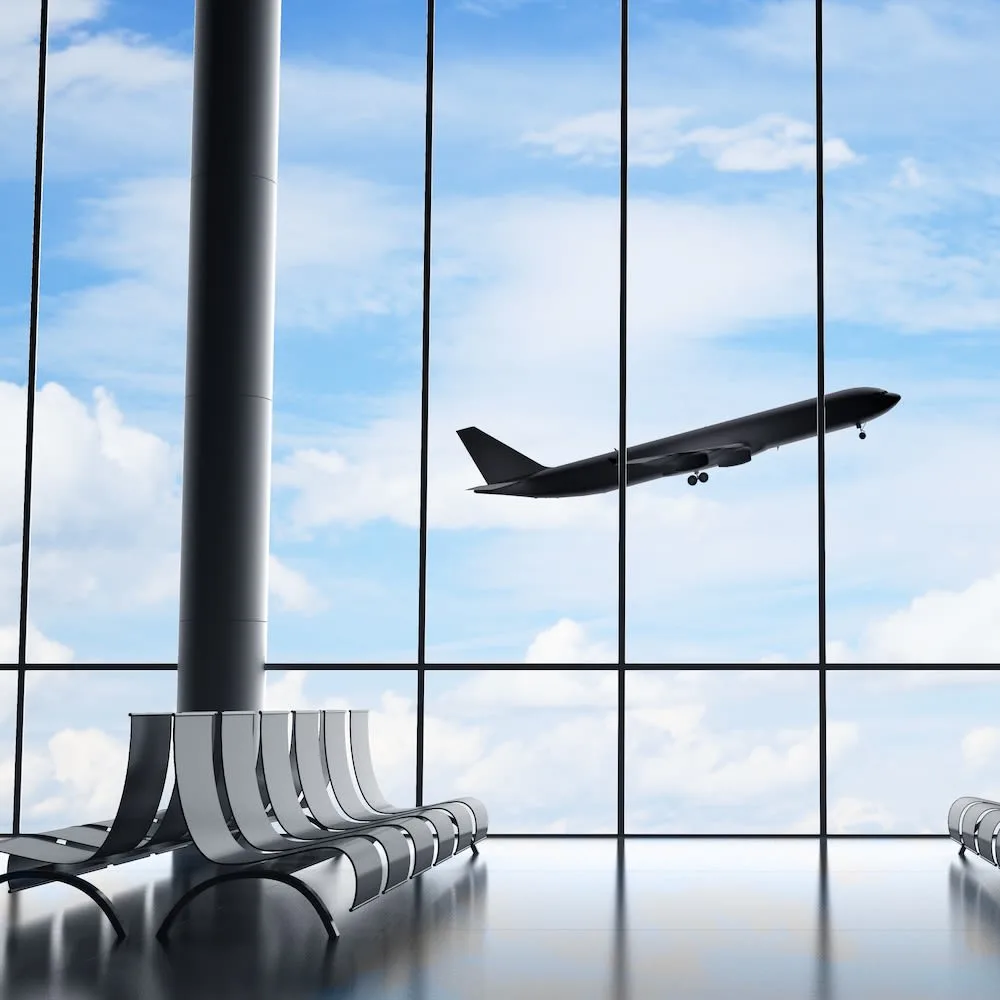
Day 7
Depart Salzburg
View More
Day 7
Depart Salzburg

To Be Determined
Transfer to Airport
Salzburg has one main airport, Salzburg Airport, although many depart from nearby Munich Airport (see below). Your hotel can arrange a reliable taxi or if you have the app, Uber is also a good option. You can also arrange a private transfer. If you are picked up about 2.5 hours before your departure time, you should arrive at the airport with a little over two hours to spare, depending on traffic. If you are leaving during rush hour, you may want to budget an extra fifteen minutes. Keep in mind though that Salzburg Airport is a very small airport, so you may end up departing from Munich instead. The Munich airport has its own rail station, making it easy to take an approximately 2-hour train ride from Salzburg.

Day 7
Depart Salzburg
View More


What's Included In Your Trip

Pre-Paid Tours and Activities:
- Guided Walk through Vienna's Inner City
- Guided Walking Tour of Salzburg

Pre-Paid Transportation:
- 2nd Class Train Tickets from Vienna to Salzburg
- Public Transport Tickets for Vienna

Accommodation:
- 4 nights at a hotel of your choice in Vienna
- 4 nights at a hotel of your choice in Salzburg

Go Real Travel Mobile App:
- Itinerary Plan & Reservations Info
- Points of Interest
- Detailed Travel Information
- Maps & Directions
Other Trips You May Like

10 Days
From$1940USD

7 Days
From$1498USD

14 Days
From$2897USD
14-Day Trip to Historic Munich, Salzburg, Vienna, and Prague

Germany, Austria, Czech Republic

10 Days
From$2249USD
Perfect Whirlwind Itinerary to Prague, Salzburg, Vienna & Budapest

Czech Republic, Austria, Hungary

9 Days
From$1598USD

10 Days
From$1749USD
Melodies and Marvels: A 10-Day Musical Journey through Vienna, Salzburg, and Hallstatt

Austria

7 Days
From$1675USD

5 Days
From$868USD

10 Days
From$1749USD

10 Days
From$1940USD

7 Days
From$1498USD

14 Days
From$2897USD
14-Day Trip to Historic Munich, Salzburg, Vienna, and Prague

Germany, Austria, Czech Republic

10 Days
From$2249USD
Perfect Whirlwind Itinerary to Prague, Salzburg, Vienna & Budapest

Czech Republic, Austria, Hungary

9 Days
From$1598USD

10 Days
From$1749USD
Melodies and Marvels: A 10-Day Musical Journey through Vienna, Salzburg, and Hallstatt

Austria

7 Days
From$1675USD

5 Days
From$868USD

10 Days
From$1749USD
prev
next
Featured Blogs
prev
next
Our Customers Say It Best
Otto Chuy, Los Angeles, California
I am still surprised how everything worked as planned, without a hitch. All instructions in your itinerary were precise and correct. Your suggestions and comments in each of the locations we went to were very helpful. All your guides, without exception, were wonderful and exactly on time. 

Kathy Mongeau, Ottawa, Ontario
My sister, Ann Ibberson, and I have been back home for a few weeks now and still go on and on about our fabulous trip. We were just blown away in every respect. Given the fact that we only had 1 ½ weeks, you had everything arranged for us so efficiently and your contacts who we dealt with for transfers, tours, hotels were extremely professional and personable. Things could not have gone better. 

Clive Andrew, Brisbane, Queensland
Just a quick note to let you know that I am back home now after probably the best overseas holiday that I have ever had, in no small part due to your very capable organization booking of hotels, tours, & trains. There was just nothing that went wrong with the timings etc. 

Malini Dutta, Boston, Massachusetts
We can't thank you enough for the detailed plans, maps, and suggestions. It really felt that someone was holding our hands and showing us around. We had all the excitement of discovering foreign lands, with none of the problems that can happen while negotiating unfamiliar places. In fact, all the cities felt like home within a few hours of arriving and exploring. 

Bev and Mark Frankel, Williamsburg, Virginia
We could not be more pleased with Go Real Travel! You took the guess work out of things like public transport but still managed to allow us the freedom to tour as we wanted. Our guides were exceptional and every time I saw a Viking Cruise tour of 25 people, I realized the quality experience we were getting with Go Real. 

Marianne Strydom, Paarl, South Africa
I just wanted to thank you for organizing an amazing trip for me – I packed in so much in such a short period of time and everything was just perfect. The way you do things makes it possible to really get to know the destination, which for me as a travel agent could not have been better. 

Otto Chuy, Los Angeles, California
I am still surprised how everything worked as planned, without a hitch. All instructions in your itinerary were precise and correct. Your suggestions and comments in each of the locations we went to were very helpful. All your guides, without exception, were wonderful and exactly on time. 

Kathy Mongeau, Ottawa, Ontario
My sister, Ann Ibberson, and I have been back home for a few weeks now and still go on and on about our fabulous trip. We were just blown away in every respect. Given the fact that we only had 1 ½ weeks, you had everything arranged for us so efficiently and your contacts who we dealt with for transfers, tours, hotels were extremely professional and personable. Things could not have gone better. 

Clive Andrew, Brisbane, Queensland
Just a quick note to let you know that I am back home now after probably the best overseas holiday that I have ever had, in no small part due to your very capable organization booking of hotels, tours, & trains. There was just nothing that went wrong with the timings etc. 

Malini Dutta, Boston, Massachusetts
We can't thank you enough for the detailed plans, maps, and suggestions. It really felt that someone was holding our hands and showing us around. We had all the excitement of discovering foreign lands, with none of the problems that can happen while negotiating unfamiliar places. In fact, all the cities felt like home within a few hours of arriving and exploring. 

Bev and Mark Frankel, Williamsburg, Virginia
We could not be more pleased with Go Real Travel! You took the guess work out of things like public transport but still managed to allow us the freedom to tour as we wanted. Our guides were exceptional and every time I saw a Viking Cruise tour of 25 people, I realized the quality experience we were getting with Go Real. 

Marianne Strydom, Paarl, South Africa
I just wanted to thank you for organizing an amazing trip for me – I packed in so much in such a short period of time and everything was just perfect. The way you do things makes it possible to really get to know the destination, which for me as a travel agent could not have been better. 



Explore cities in more detail

Prague
The city of Prague is indisputably the gem of Central Europe. Full of history, culture, and classic Czech pubs around every corner, Prague is teeming with nooks and crannies just waiting to be discovered. The narrow cobblestone streets and warm red rooftops give the city a homey feel, while the well-preserved medieval architecture transports you back in time. Walking across the Charles Bridge with the view of the Prague Castle will make you feel like you’re living in a fairytale, and you might as well be. As an up-and-coming destination, Prague is a perfect mix of classic and modern. New trendy cafes and bistros are always popping up, and you can always find a group of lively locals chowing down on goulash and quaffing pivo (the best beer in Europe!) at traditional Czech restaurants across the city. The clash of modernity and tradition, preservation and innovation, gives this city a mysterious air that you won’t soon forget.
Read More
Learn About Prague
Build Prague Trip
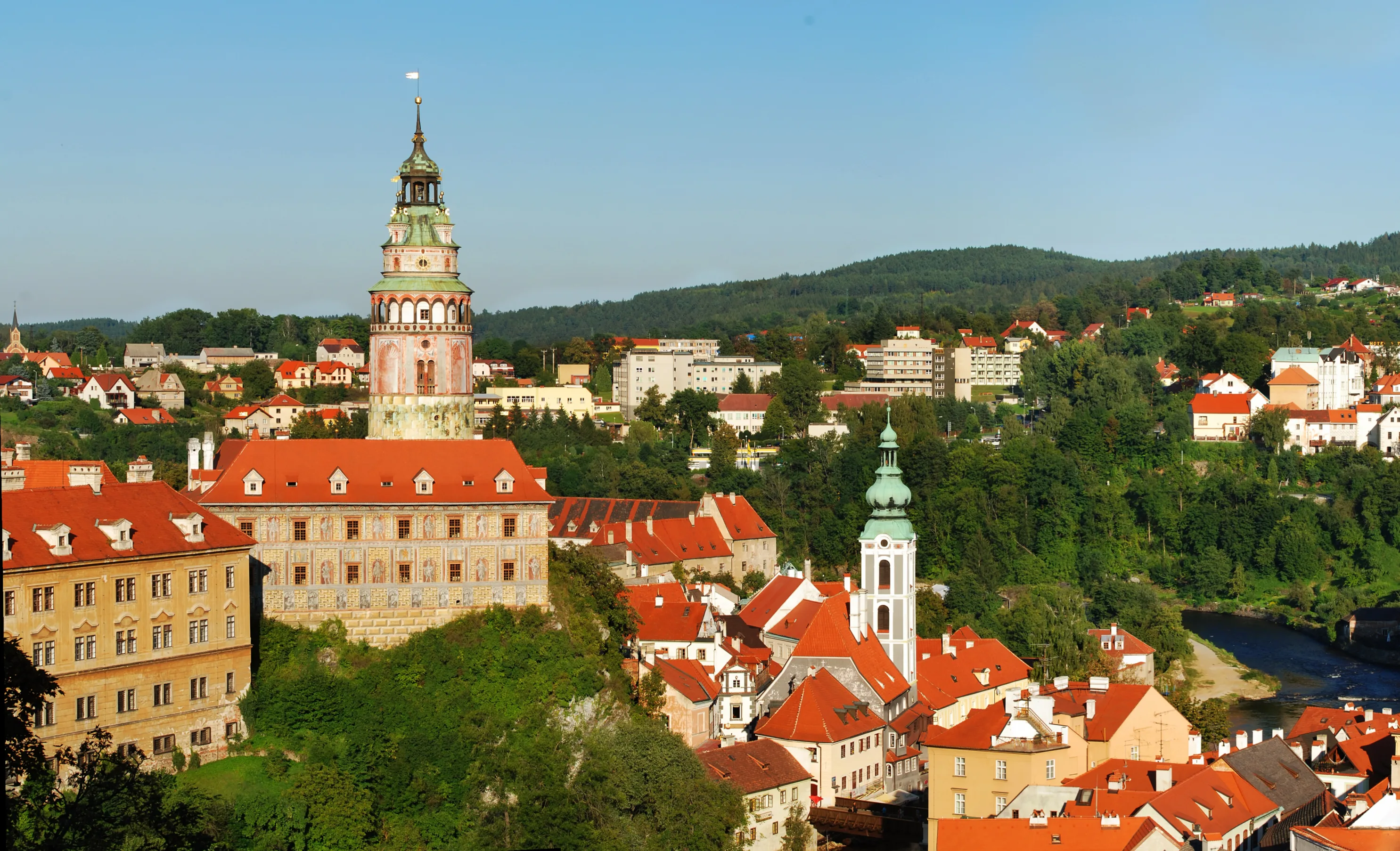
Cesky Krumlov
Cesky Krumlov is a charming little town in South Bohemia. It might be small, but it’s full of whimsical character and mystery. Walking through the narrow streets and across the bridge, the views of the medieval Cesky Krumlov Castle will take your breath away. At night, street musicians serenade visitors on the bridge where you can dance beneath the stars and the watchful eye of the magnificent tower. Dozens of unique local artisan shops, cafes, and restaurants are woven among the winding streets. In the summer, the city is lush with life and greenery. Rafters race down the river, stopping in the center along the way to enjoy a hearty meal before continuing their journey. In the winter, the main square transforms into a magnificent Christmas market and light blankets of snow cover the rooftops. This quaint little town will exceed your expectations and you may never want to leave.
Read More
Learn About Cesky Krumlov
Build Cesky Krumlov Trip

Bratislava
Bratislava is one of the most up-and-coming cities in central Europe. After years in the shadows of the Soviet bloc, and often drowned out by Prague, Bratislava has finally broken out. The Bratislavan region is now one of the richest per capita in the EU. This economic upswing has infused Bratislava with a newfound zeal. Trendy cafes and cool shopping centers are popping up everywhere, and the city’s already happening nightlife scene is only set to get better. Still less crowded than its central European neighbors Prague, Vienna, and Budapest, but just as intriguing, there’s really never been a better time for a visit to Bratislava. Ruled over by the Hungarians, Austrians, and most recently the Soviets, Bratislava is a city of strange contrasts. As soon as you arrive in Bratislava, you’ll see the pastel-hued churches, baroque houses, and the cobbled Old Town Square brush shoulders with modern brutalist buildings, retrofuturistic towers, and the clunky communist built UFO bridge. The city’s oldest building, its castle, is set atop the western edge of the Little Carpathian Hills like a trophy, the city’s hard-won main icon. For the first time in nearly a millennium, Bratislava has now seized control of its own destiny, and it shows.
Read More
Learn About Bratislava
Build Bratislava Trip

Vienna
Artistic and musical, historical and elegant, Vienna is the definition of class. The seat of the Habsburg monarchy for over six centuries, it's no wonder this city is still fit for royalty. Baroque buildings and imperial palaces dominate the cityscape, while locals stride gracefully through the streets, likely on their way to a classical music concert or art exhibition. Visitors from all over the world flock to Schonbrunn Palace, historical museums, and local eateries for authentic Viennese schnitzel. Vienna is also home to world-class wining and dining. Famous dishes include Wiener schnitzel, Tafelspitz (prime boiled beef), and apfelstrudel (apple strudel), all of which pair well with a glass of fine Austrian wine. No matter how long you spend in Vienna, you'll leave with a new appreciation for the finer things in life.
Read More
Learn About Vienna
Build Vienna Trip

Salzburg
You've probably heard this before— the city of Salzburg is straight out of a fairytale. Nestled in the mountains, this romantic city's Baroque architecture with colorful domes and spires is especially striking against the ancient fortress and Austrian Alpine backdrop. If you're looking for an amazing view, climb up to Hohensalzburg Fortress, Central Europe's largest intact fortress, for a jaw-dropping panorama of the city backed by misty mountains. Perhaps most famous for being the birthplace of the renowned composer Wolfgang Amadeus Mozart and the filming location for the classic The Sound of Music, this city has much to offer. Salzburg has become an important artistic and cultural center, featuring magnificent concert halls that uphold the city's tradition of classical music every day of the year, as well as acclaimed art exhibitions and museums. If you do it right, your visit to Salzburg will immerse you in the city's unforgettable atmosphere and keep you coming back for more.
Read More
Learn About Salzburg
Build Salzburg Trip
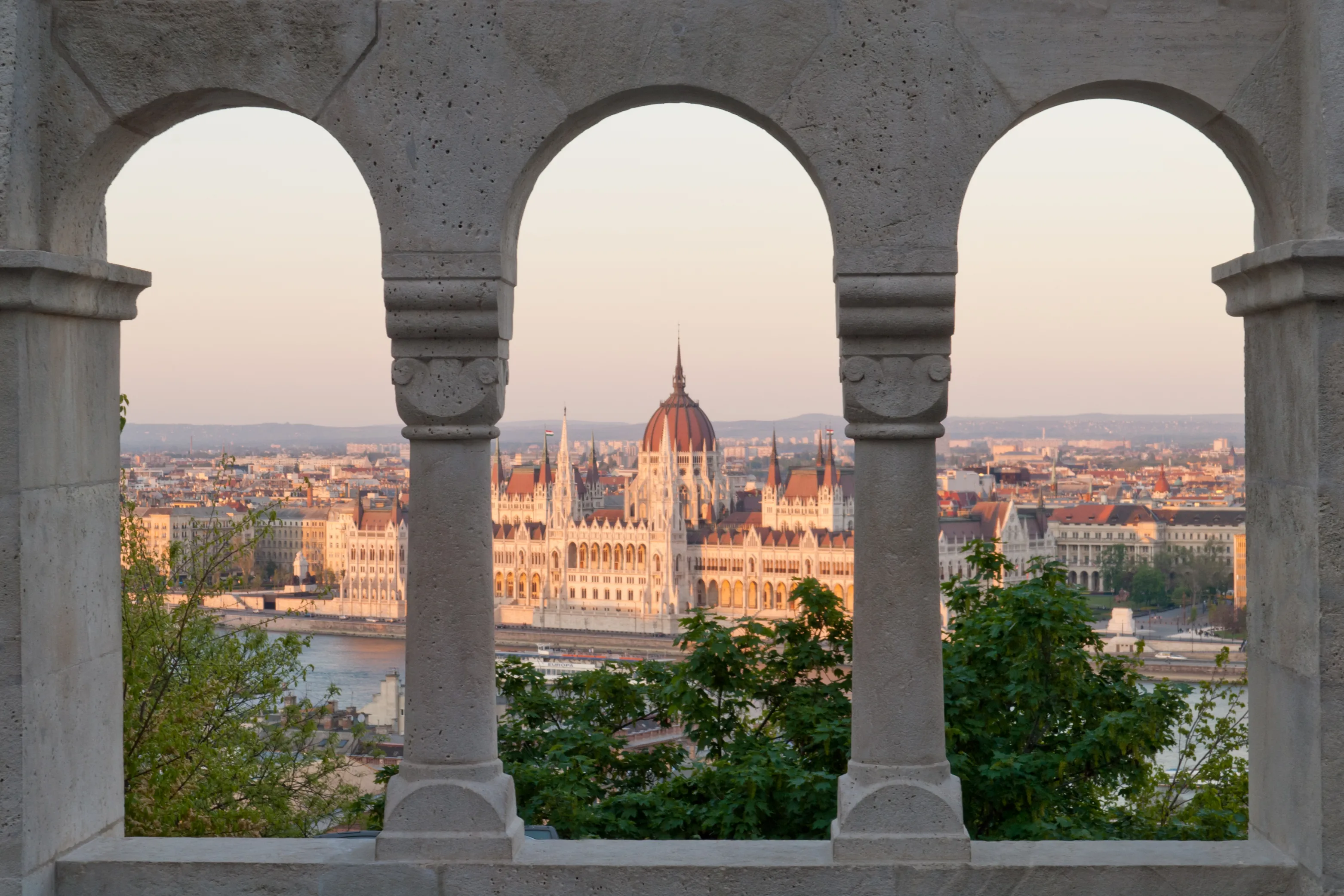
Budapest
Situated at the heart of Europe, Budapest is the capital of Hungary, appropriately named 'The Pearl of the Danube,' for its fixating and almost haunting beauty. Formerly two separate cities, Buda and Pest were forged into one by time, occupation, and the eight bridges that anchor them together today. From the Romans to the Communists, each occupier left its flavor profile in Budapest, evident in the famous spicy Hungarian stew known as 'goulash.' Budapest is a melting pot of history, culture, and taste, from the magnificent Baroque and neo-Gothic architecture to the Turkish thermal baths. After a long day of sightseeing, treat yourself to a glass of Tokaj, what King Louis XIV of France referred to as the "Wine of Kings, King of Wines". Budapest has a flavor to satisfy any taste.
Read More
Learn About Budapest
Build Budapest Trip

Prague
The city of Prague is indisputably the gem of Central Europe. Full of history, culture, and classic Czech pubs around every corner, Prague is teeming with nooks and crannies just waiting to be discovered. The narrow cobblestone streets and warm red rooftops give the city a homey feel, while the well-preserved medieval architecture transports you back in time. Walking across the Charles Bridge with the view of the Prague Castle will make you feel like you’re living in a fairytale, and you might as well be. As an up-and-coming destination, Prague is a perfect mix of classic and modern. New trendy cafes and bistros are always popping up, and you can always find a group of lively locals chowing down on goulash and quaffing pivo (the best beer in Europe!) at traditional Czech restaurants across the city. The clash of modernity and tradition, preservation and innovation, gives this city a mysterious air that you won’t soon forget.
Read More
Learn About Prague
Build Prague Trip

Cesky Krumlov
Cesky Krumlov is a charming little town in South Bohemia. It might be small, but it’s full of whimsical character and mystery. Walking through the narrow streets and across the bridge, the views of the medieval Cesky Krumlov Castle will take your breath away. At night, street musicians serenade visitors on the bridge where you can dance beneath the stars and the watchful eye of the magnificent tower. Dozens of unique local artisan shops, cafes, and restaurants are woven among the winding streets. In the summer, the city is lush with life and greenery. Rafters race down the river, stopping in the center along the way to enjoy a hearty meal before continuing their journey. In the winter, the main square transforms into a magnificent Christmas market and light blankets of snow cover the rooftops. This quaint little town will exceed your expectations and you may never want to leave.
Read More
Learn About Cesky Krumlov
Build Cesky Krumlov Trip

Bratislava
Bratislava is one of the most up-and-coming cities in central Europe. After years in the shadows of the Soviet bloc, and often drowned out by Prague, Bratislava has finally broken out. The Bratislavan region is now one of the richest per capita in the EU. This economic upswing has infused Bratislava with a newfound zeal. Trendy cafes and cool shopping centers are popping up everywhere, and the city’s already happening nightlife scene is only set to get better. Still less crowded than its central European neighbors Prague, Vienna, and Budapest, but just as intriguing, there’s really never been a better time for a visit to Bratislava. Ruled over by the Hungarians, Austrians, and most recently the Soviets, Bratislava is a city of strange contrasts. As soon as you arrive in Bratislava, you’ll see the pastel-hued churches, baroque houses, and the cobbled Old Town Square brush shoulders with modern brutalist buildings, retrofuturistic towers, and the clunky communist built UFO bridge. The city’s oldest building, its castle, is set atop the western edge of the Little Carpathian Hills like a trophy, the city’s hard-won main icon. For the first time in nearly a millennium, Bratislava has now seized control of its own destiny, and it shows.
Read More
Learn About Bratislava
Build Bratislava Trip

Vienna
Artistic and musical, historical and elegant, Vienna is the definition of class. The seat of the Habsburg monarchy for over six centuries, it's no wonder this city is still fit for royalty. Baroque buildings and imperial palaces dominate the cityscape, while locals stride gracefully through the streets, likely on their way to a classical music concert or art exhibition. Visitors from all over the world flock to Schonbrunn Palace, historical museums, and local eateries for authentic Viennese schnitzel. Vienna is also home to world-class wining and dining. Famous dishes include Wiener schnitzel, Tafelspitz (prime boiled beef), and apfelstrudel (apple strudel), all of which pair well with a glass of fine Austrian wine. No matter how long you spend in Vienna, you'll leave with a new appreciation for the finer things in life.
Read More
Learn About Vienna
Build Vienna Trip

Salzburg
You've probably heard this before— the city of Salzburg is straight out of a fairytale. Nestled in the mountains, this romantic city's Baroque architecture with colorful domes and spires is especially striking against the ancient fortress and Austrian Alpine backdrop. If you're looking for an amazing view, climb up to Hohensalzburg Fortress, Central Europe's largest intact fortress, for a jaw-dropping panorama of the city backed by misty mountains. Perhaps most famous for being the birthplace of the renowned composer Wolfgang Amadeus Mozart and the filming location for the classic The Sound of Music, this city has much to offer. Salzburg has become an important artistic and cultural center, featuring magnificent concert halls that uphold the city's tradition of classical music every day of the year, as well as acclaimed art exhibitions and museums. If you do it right, your visit to Salzburg will immerse you in the city's unforgettable atmosphere and keep you coming back for more.
Read More
Learn About Salzburg
Build Salzburg Trip

Budapest
Situated at the heart of Europe, Budapest is the capital of Hungary, appropriately named 'The Pearl of the Danube,' for its fixating and almost haunting beauty. Formerly two separate cities, Buda and Pest were forged into one by time, occupation, and the eight bridges that anchor them together today. From the Romans to the Communists, each occupier left its flavor profile in Budapest, evident in the famous spicy Hungarian stew known as 'goulash.' Budapest is a melting pot of history, culture, and taste, from the magnificent Baroque and neo-Gothic architecture to the Turkish thermal baths. After a long day of sightseeing, treat yourself to a glass of Tokaj, what King Louis XIV of France referred to as the "Wine of Kings, King of Wines". Budapest has a flavor to satisfy any taste.
Read More
Learn About Budapest
Build Budapest Trip
prev
next


 Map of Your Itinerary Route
Map of Your Itinerary Route
Zoom In to the cities to see your itinerary in more detail


 4.8
4.8 







